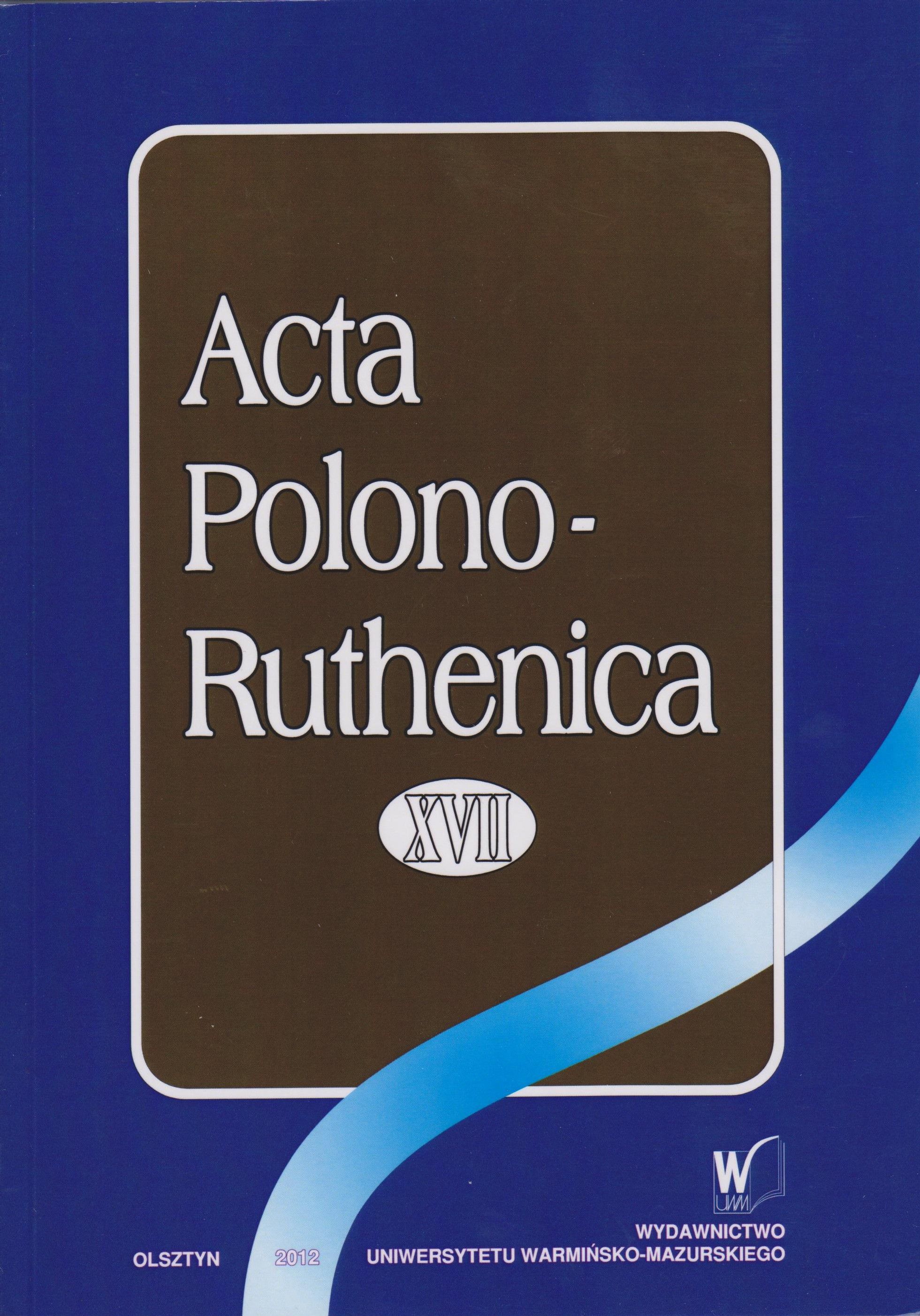Poslav spekulatora , czyli kata ” - ekwiwalenty leksykalne w ukraińskim wariancie „prostej mowy ” XVIII wieku (na materiale „Nauk parafialnych ” Juliana Dobrylowskiego, Poczajów 1794)
"Poslav spekulatora, czyli kata” lexical equivalents o f the Ukrainian variant of so called "prosta mova” of 18th century (based on the "Naukiparochialnija” by Julian
Dobrytowsky, Pochayev 1794)
Author(s): Joanna GetkaSubject(s): Language studies, Language and Literature Studies, Theoretical Linguistics
Published by: Wydawnictwo Uniwersytetu Warmińsko-Mazurskiego w Olsztynie
Keywords: lexical equivalents; Julian Dobrytowsky
Summary/Abstract: The subject of the study is the lexic of a relic of Ruthenian literature titled NAUKI PAROCHIALNIJAna Nedeli i S(vja)ta uroczistyja celogo Roku, z E(vange)lij podlug obrjadu greczeskagoraspolozennych, z pridaniem pri konci nauki pri, szljube, dvoch nauk pri pogrebenii, i naPjatki s(vja)tago velikago posta, o Strastech Chr(is)tovych, further called Nauki, edited in 1794. The analyzed composition of homilies was created in one of the most resilient centers of Greek Catholic Eastern Rite who were well known for their attachment to Ruthenian culture and language, in Poczajow in Wolyn and it was designated for Eastern Rite priests and believers of Eastern Rite confines dioceses. The composition of written in Cyrillic alphabet homilies is attributed to Julian Dobrylovski. According to the author assumption, language of the piece, close to simple - spoken language was supposed to be understood for believers of Greek Catholic Church. Thanks to this Nauki is the remarkable material for the analysis of factual state of language in the century it was created in. The subject of the analysis were the definitions of the lexemes that occur in the relic which include element it means, for example: vu ladiju, cili vu covenu rybackij and others (148 pairs). The study proved that the majority of lexemes belong to the Ukrainian language. Therefore, theanalysis of the language of Nauki has a capital meaning in the studies on the development of Ukrainian literature language. It fulfils already existing notices and language description of the period of their creations with the religious, pulpit literature work. This kind of literature was omitted in linguistic description till recently with various causes (among all with the conviction that this genre works are written in fossilized Church Slavonic language).
Journal: Acta Polono-Ruthenica
- Issue Year: 2012
- Issue No: XVII
- Page Range: 217-233
- Page Count: 17
- Language: Polish

